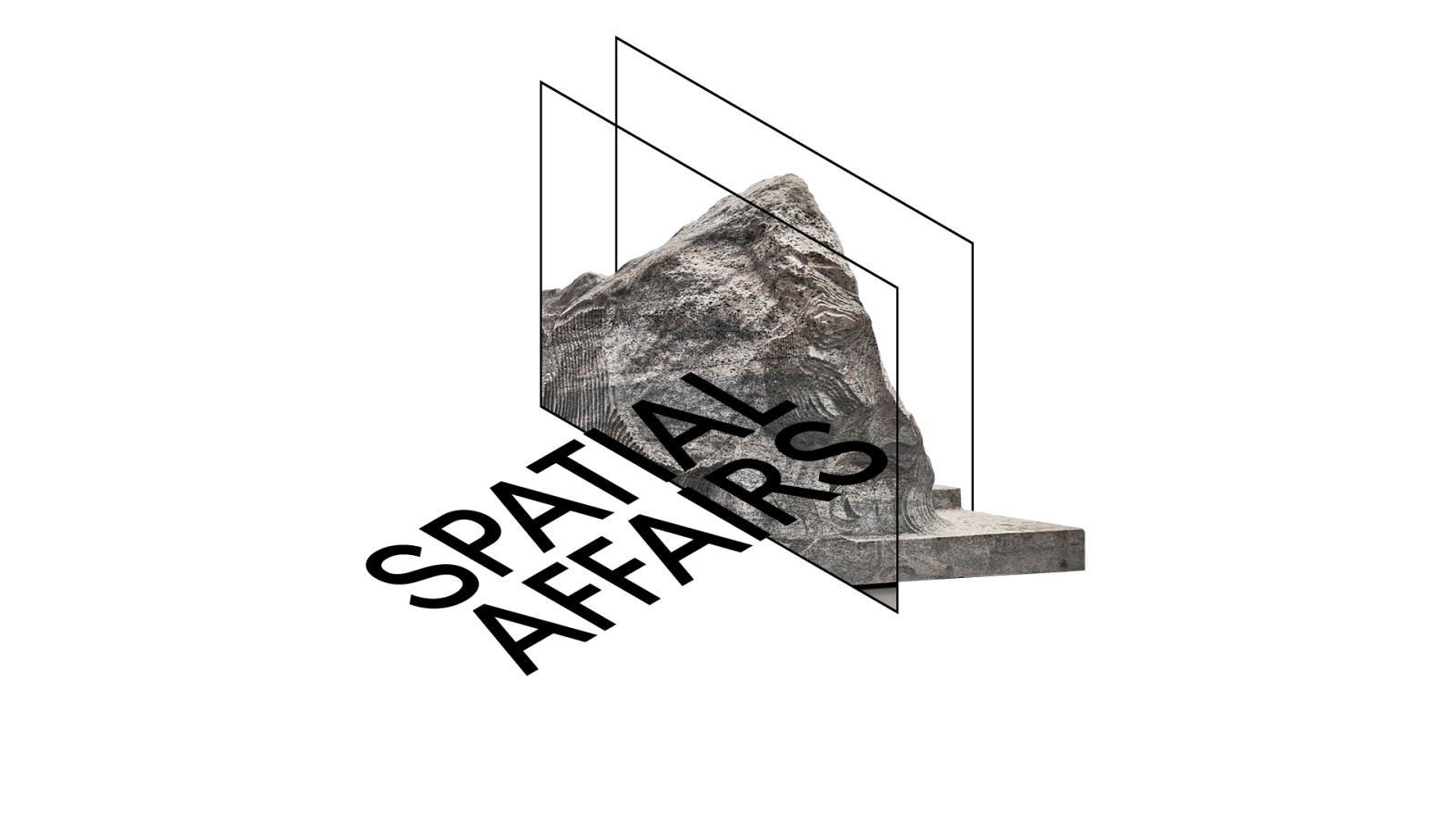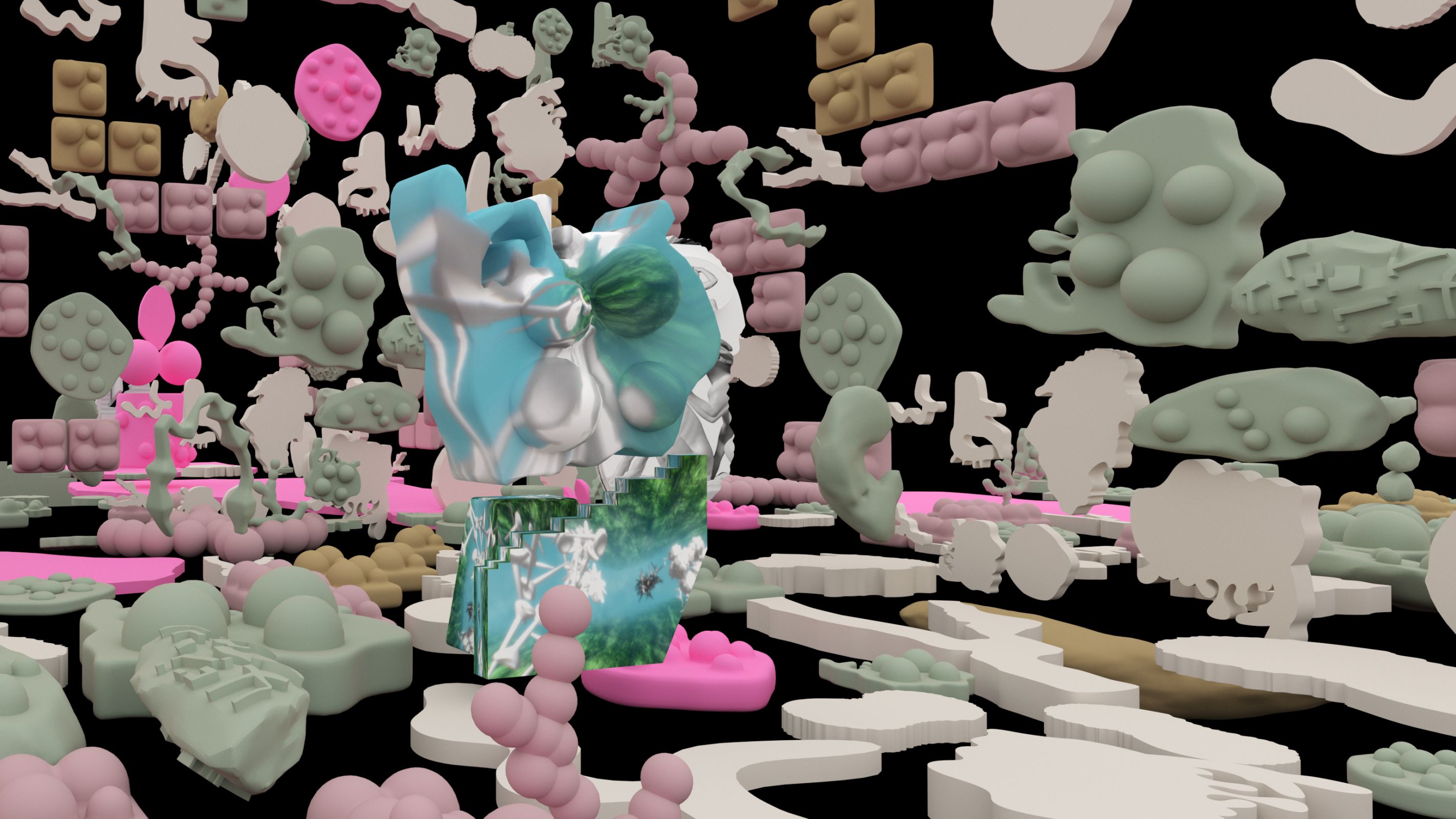Virtual Online Environment
Conceived as part of the exhibition Spatial Affairs, presented at the Ludwig Museum – Museum of Contemporary Art, Budapest, Spatial Affairs. Worlding is an exploratory online environment, a virtual multi-user exhibition populated by crawling artworks, where visitors’ avatars coexist with moving bodies of internet art and browser-based projects.
Designed by post-critical Dutch design studio The Rodina, Spatial Affairs. Worlding is inspired by Konrad Zuse's theory of Calculating Space (1969)—describing a universe that consists of an abundance of living and evolving automata, of discrete computational systems composed of cells that add up to a large self-reproducing cellular automaton. The artworks and visitors that inhabit the virtual world of the exhibition are computational, biological, and geological bodies without organs, and the walls and floors are technical beings: everyone and everything is sculpted from the same digital tissue.
Such an ever-evolving ecosystem requires its own ontology as arbitrary, performative, and processual, as a binary-code-based yet essentially pluralistic virtual environment. Boundaries between subject and surroundings are coming apart; all entities become agents even if they act without the agency of matter. Worlding refers to a constant process of bringing to light as yet undisclosed folds in digital space that lead to further speculations, theses, stories, and games, which in turn manifest as born-digital internet-based works of art. The environment’s multiple, generative spatiality is enhanced by artist Enrico Boccioletti’s organic soundscape of ever-changing textures, composed out of scatters created from recordings of hard drives’ electromagnetic radiation and vocal humming.
The environment is The Rodina’s answer to questions posed by the curators on how the content of an online exhibition can be transformed into a spatial and responsive experience: What if artworks are represented by avatars and one can meet them in virtual space? What happens when an exhibition becomes an ecosystem, generating what Zuse terms a “computing cosmos”? Conceived as an exhibition and an active platform, the environment will host a series of talks, guided tours, and events, acting as a catalyzer for discussions around the issues raised by Spatial Affairs.
Spatial Affairs. Worlding is co-produced by ZKM | Karlsruhe and EPFL Pavilions.
Poster motif © Zoltán Szmolka. Excerpt depicted Work © Alicja Kwade

Questioning the inner consistency of space, its philosophical and ontological status, its attachment and relationship to reality, has long been a latent undercurrent in the visual arts. This occasionally passionate, other times rather secretive attachment to such ontological affairs may have caused strong feelings in certain betrayed parties—narrative, for example—yet the relationship has proved to have a persistent hold.
If its termination is unthinkable, questioning around space and its entanglement with reality has also been continually reframed by the proliferation of immaterial spheres that become legitimate parallel dimensions of our perception, expression, experience, knowledge, communication, and analysis. With the arrival of generative imagery, reflecting on this only becomes more pertinent.
The exhibition Spatial Affairs explores artistic reactions to these matters, including pre- and post-computational approaches from the early avant-garde through conceptualism to very recent works of art. In Spatial Affairs the binary relationship between the actual and the virtual, the real and the possible, evaporates into a multidimensionality in which the only betrayed party is dualism, leading to exploded axes of complex and multiplied notions of space.
Spatial Affairs is part of the international cooperation project BEYOND MATTER: Cultural Heritage on the Verge of Virtual Reality, in collaboration with the ZKM | Center for Art and Media Karlsruhe and the Ludwig Museum of Contemporary Art, Budapest with the contribution of the Aalto University, Helsinki.
